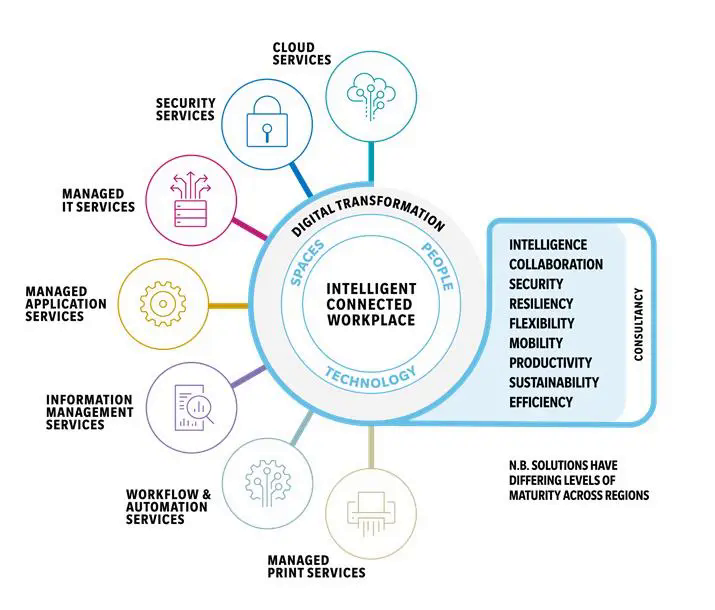However, the rapid deployment of staff from the office to remote work tested both the technology infrastructure and concept of remote work. Organizations struggled to maintain cultural connections with their associates, and those working remotely often had to come to terms with understanding how to connect to their workplace VPNs, juggling endless virtual meetings with interrupting family and/or roommates, and often managing childcare in the working day, too. As such, leaders of some of the largest providers of technology to support remote work have spoken of loss of connectedness, or announced they will be expecting all of their employees to be back in the office as soon as it is safe to do so.
So with the jury still out on what approach – on-premise, remote, or hybrid – works best for each business type moving forward in 2021, businesses will need to look more closely at components such as people (workers), spaces (the physical spaces they work in, which can be many) and technology (from hardware to software). But, not only will it require identifying these components, it will be essential to seamlessly integrate them. By connecting them effectively, we can create the ‘intelligent connected workplace.’
What is the intelligent connected workplace?
A recent Technology Vision 2021 whitepaper released by Accenture contained a couple of ideas that really resonate with our vision of the intelligent connected workplace. This first is ‘Technology Democratization,’ which essentially is making the powerful tools available to employees without requiring special skills to use it. The second is ‘BYOE’ (bring your own environment) meaning that associates have access to the same on-premise environment, wherever they are working.
These ideas are synthesized in the intelligent connected workplace, a dynamic and digitally transformed work model, enabling smarter ways of working and ultimately driving digital transformation. Doing so then places the emphasis on finding services that are built around you and how you work; putting you in control of your IT to be more intelligent, efficient, productive and secure. As such, when we talk about the intelligent connected workplace, we’re offering you a future. And getting there is achieved via an integrated portfolio of customizable services.
An integrated portfolio
Our portfolio of hardware and solutions are designed to integrate solutions across the entire workplace ecosystem. Partnering with businesses of all sizes, this 360-degree approach is built from a combination of our global expertise paired with our local market knowledge. This enables us to build solutions that scale around differing organizational needs.
